aleahayesblog
22 posts
Don't wanna be here? Send us removal request.
Text
Project Evaluation
After all the research, art experimentation and designing i created the book I originally set out to create. The book itself is almost completely void of all colours except black and white and a small amount of orange, yellow and blue.
The purpose of this is to encourage the participator to be creative with their use of utensil and colour choices taking the full opportunity to be expressive and experiment with how they convey situations.
The book although small in size and simplistic contains all the information I intended for it to. I wanted a collaboration between art therapy type activities and simplistic stress relieving activities for the participators potential enjoyment.
If creating the book on a more public large scale basis I would instead create a book that includes materials for the participator to use. An example of the materials I would include would be;
Paints
Pencils
Post card
Balloon
Charcoal
Colouring pencils
Magazine types of media
It would be a colouring book/pack type creation that wouldn’t require anyone to seek out any additional materials which would cause less hassle for the potential user.
I am overall pleased with the outcome of my findings and designing but would happily take the opportunity in the future to expand my focus area and increase the size of the project/outcome.
0 notes
Photo

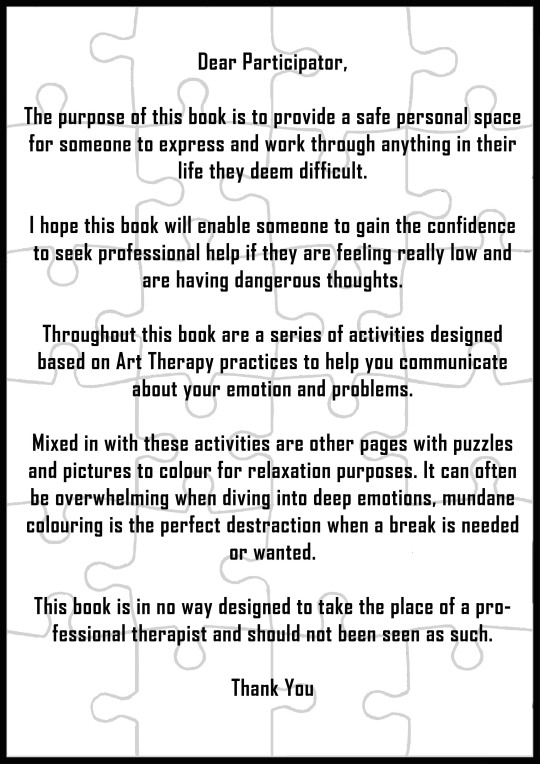
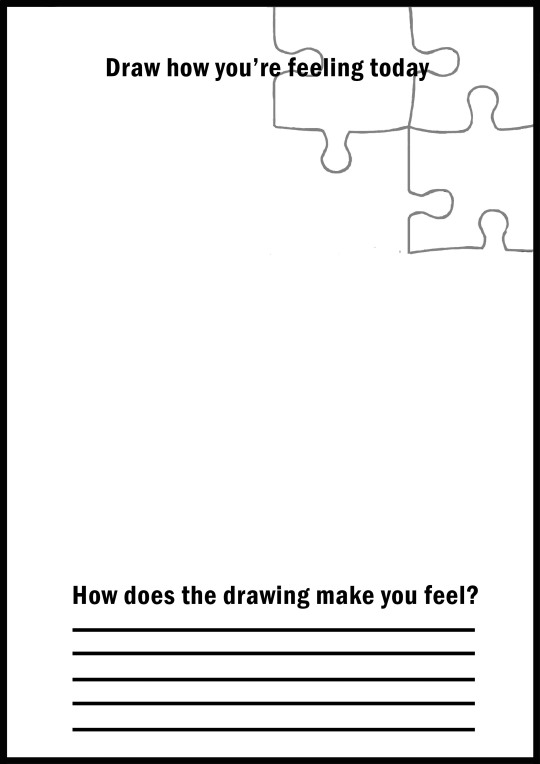
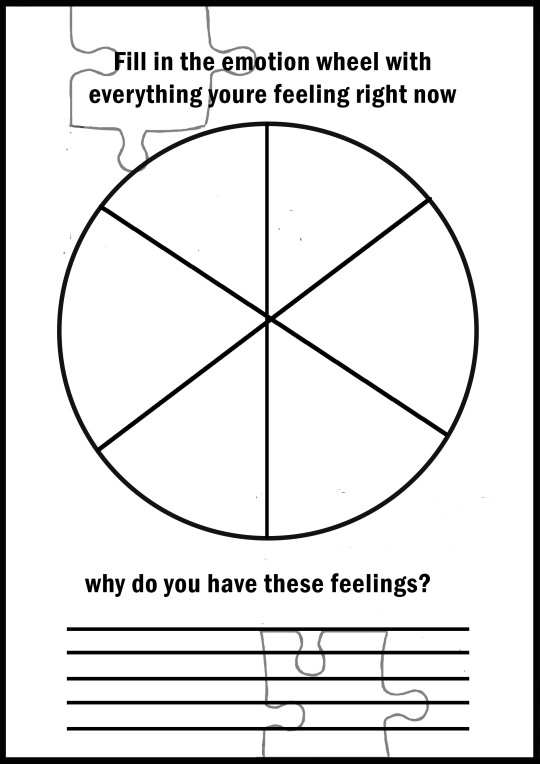
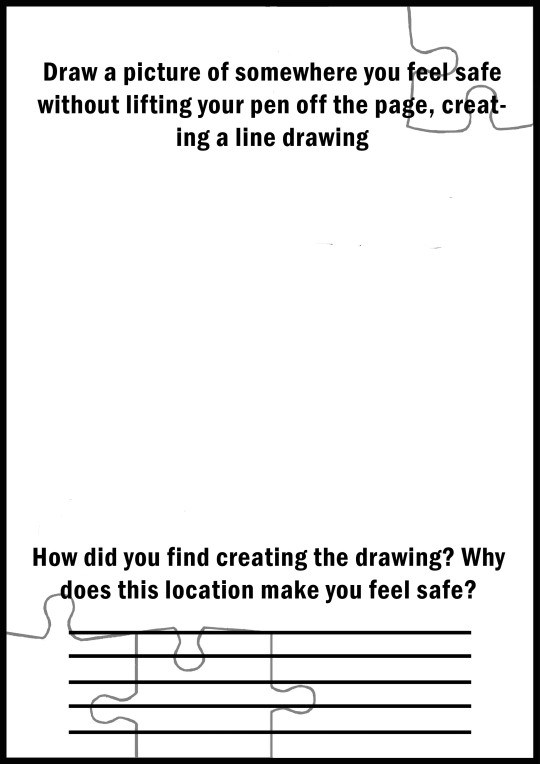

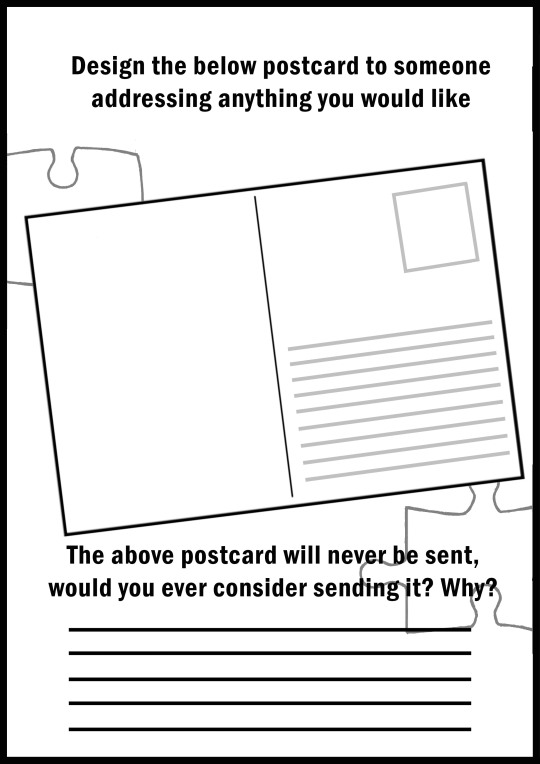
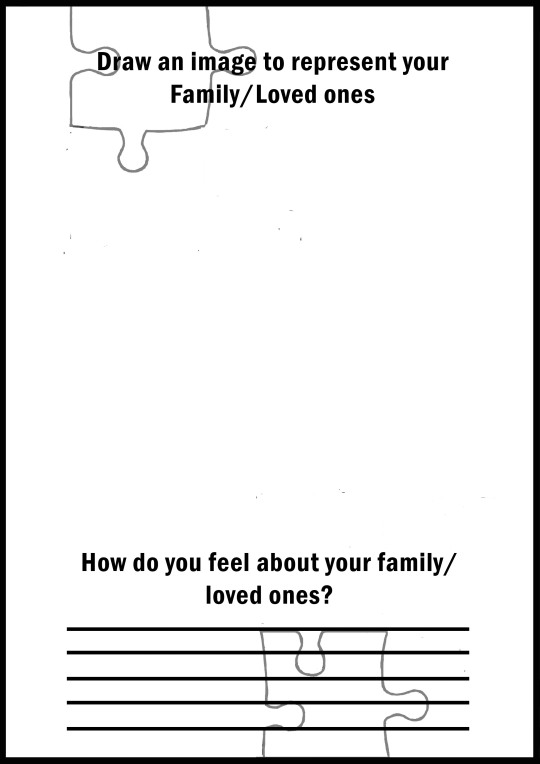
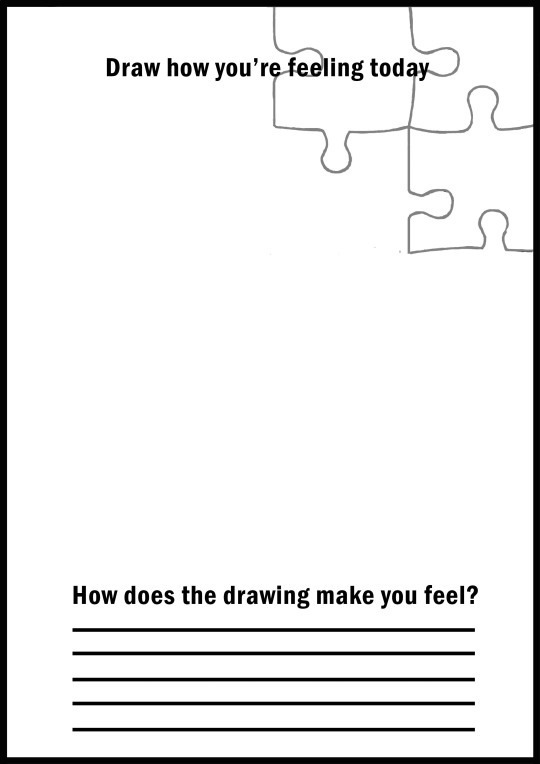
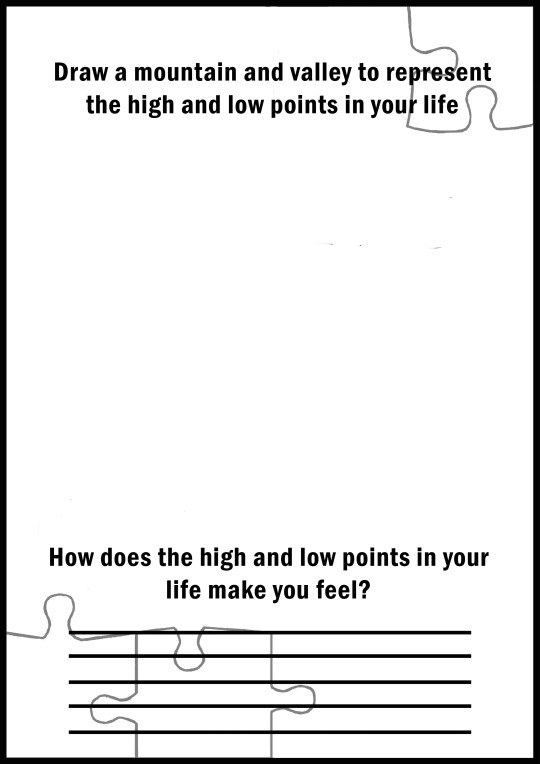
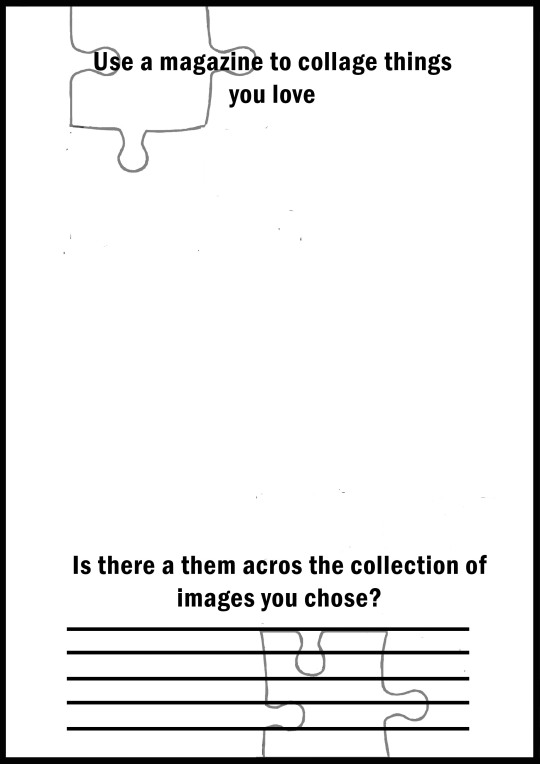
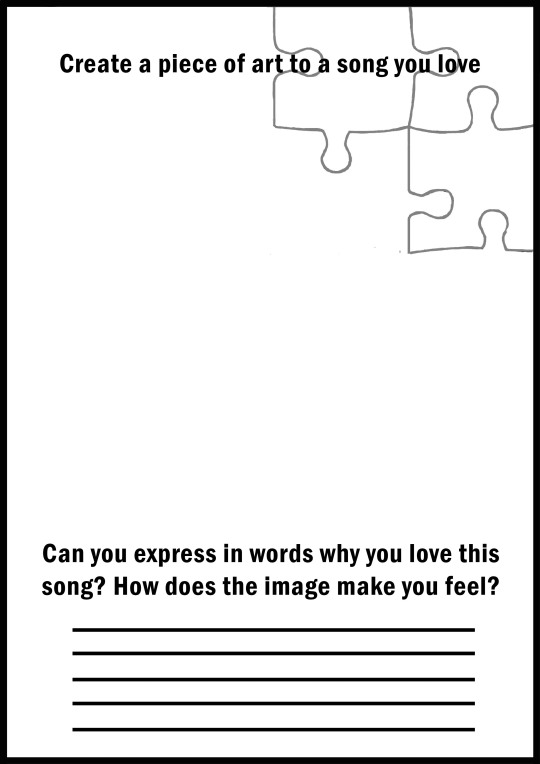
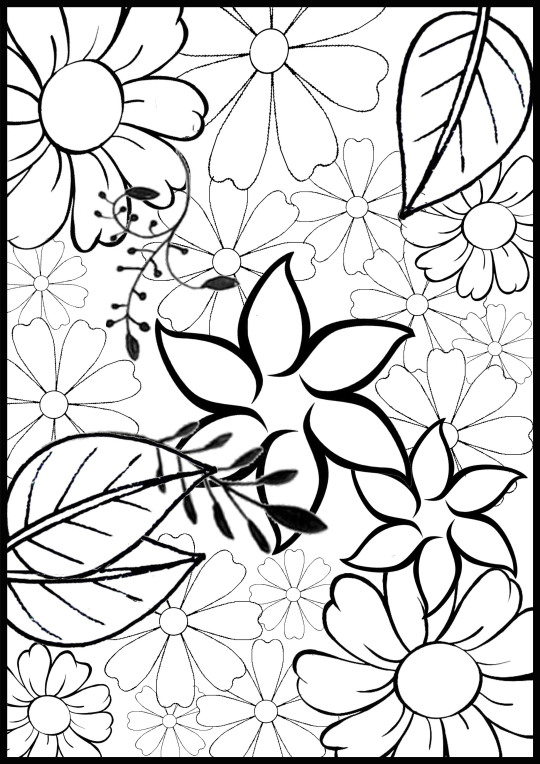
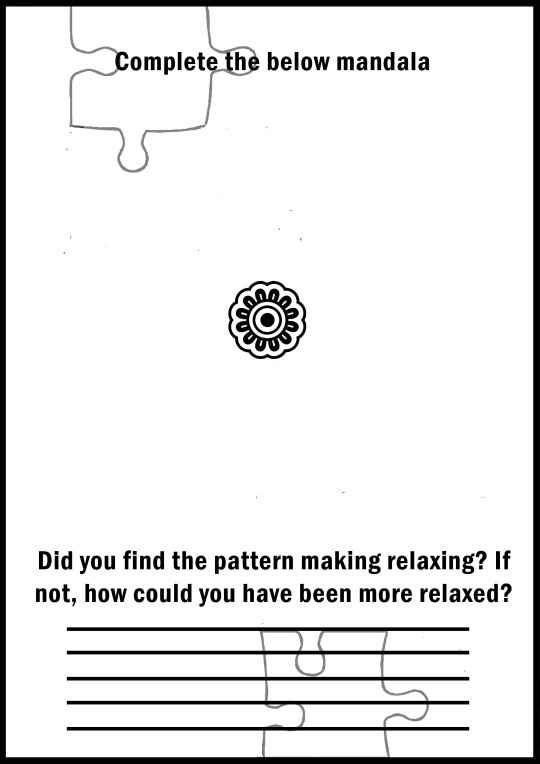

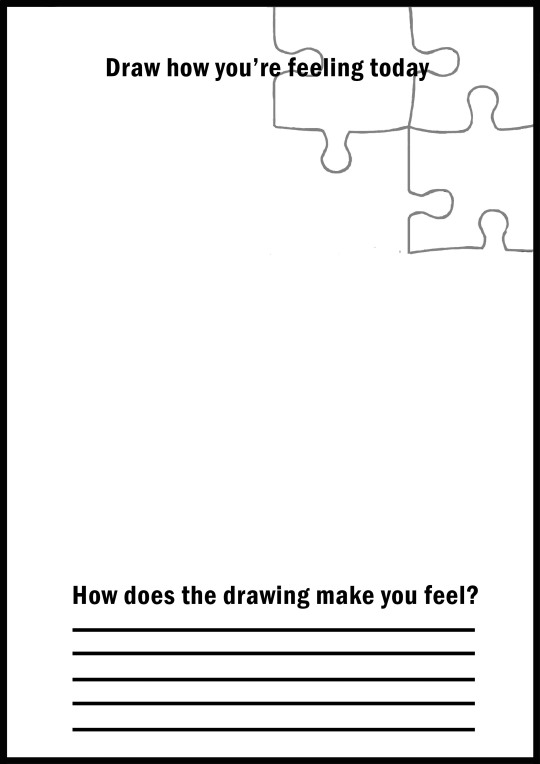

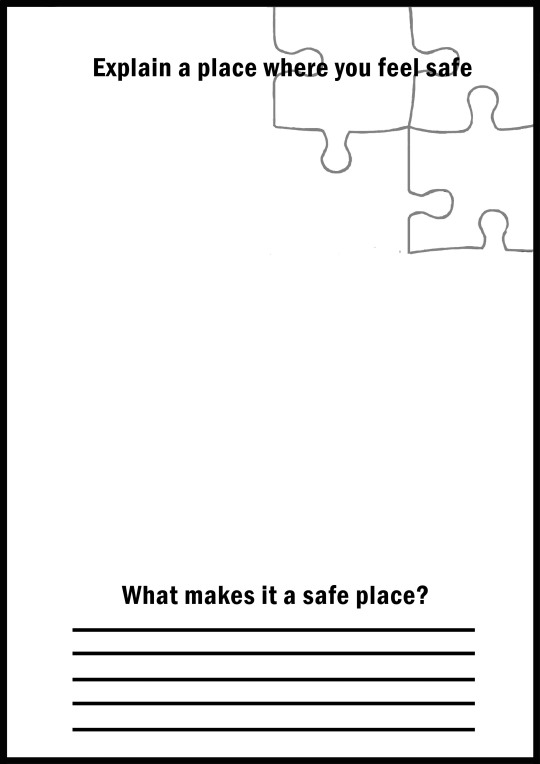
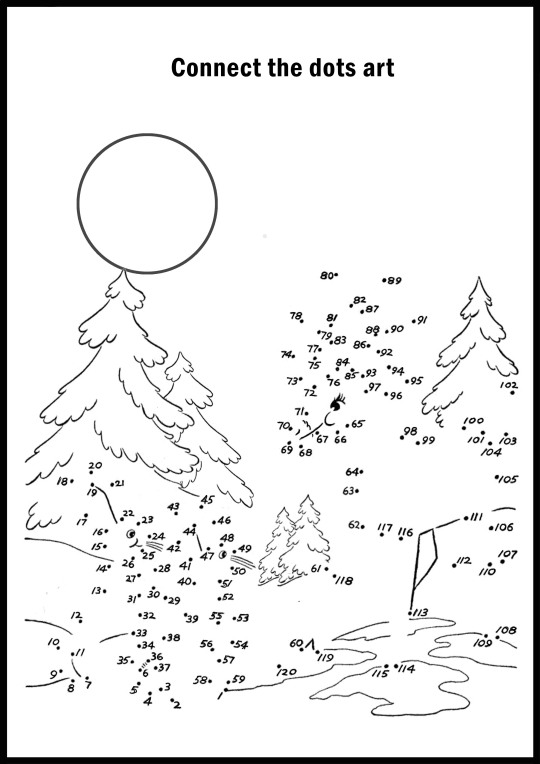
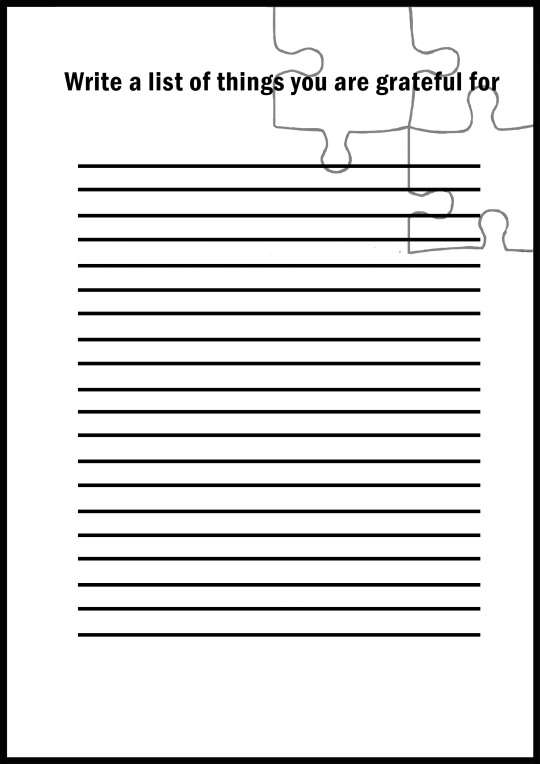
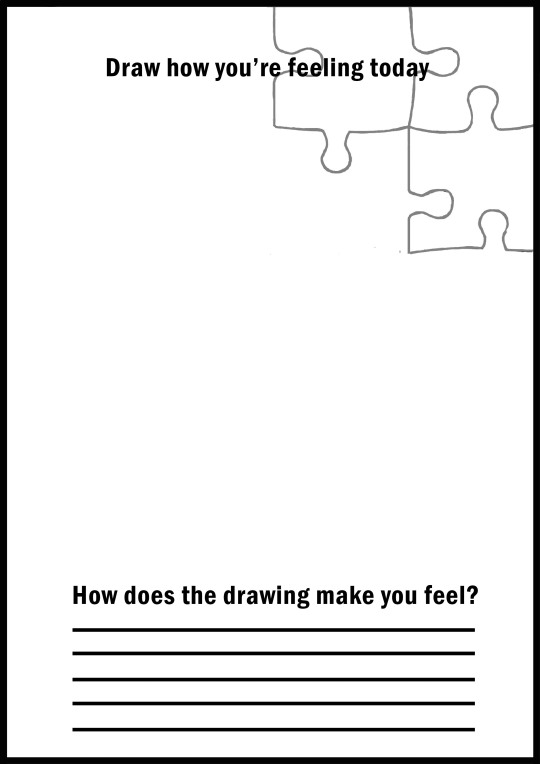
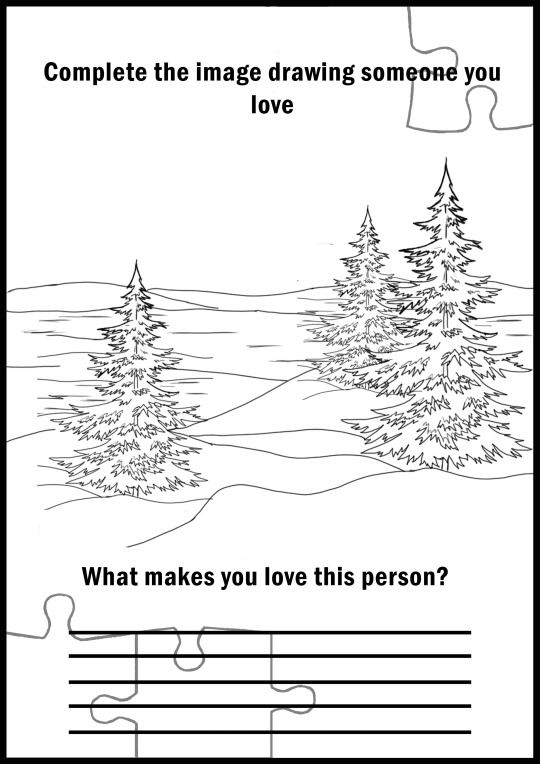

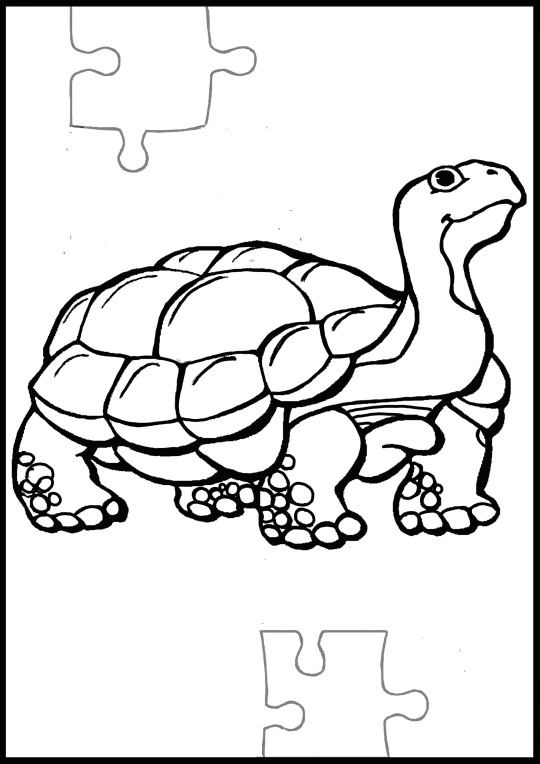
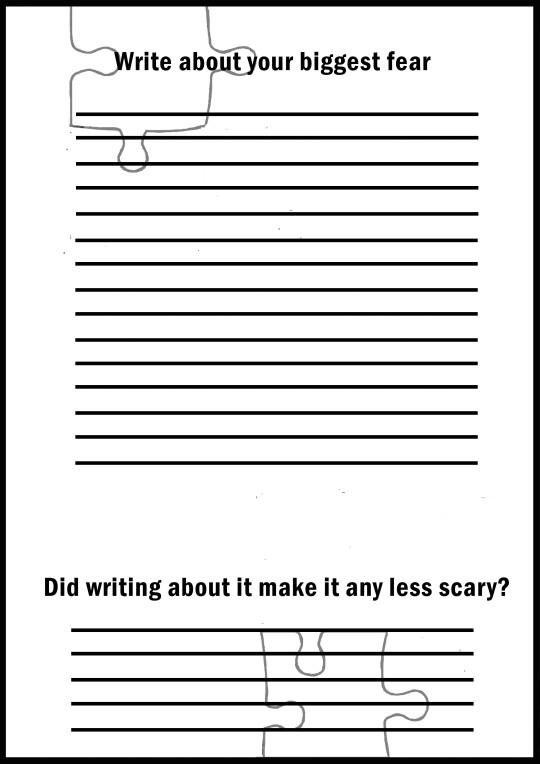
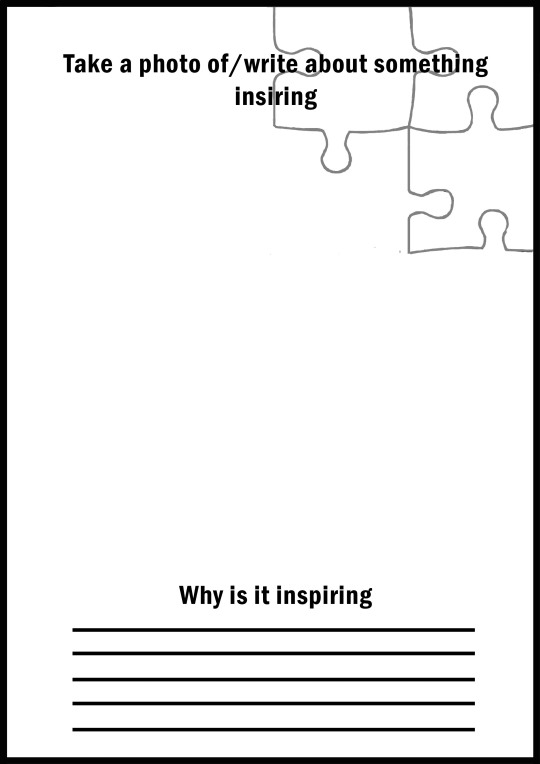
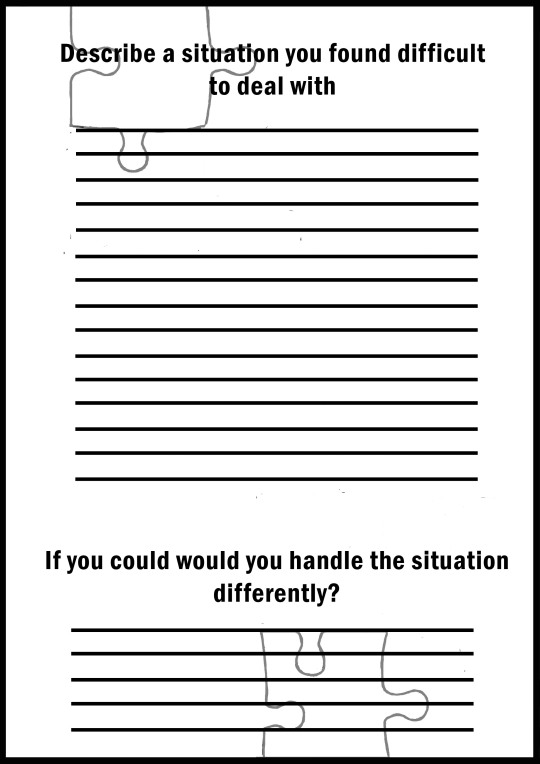
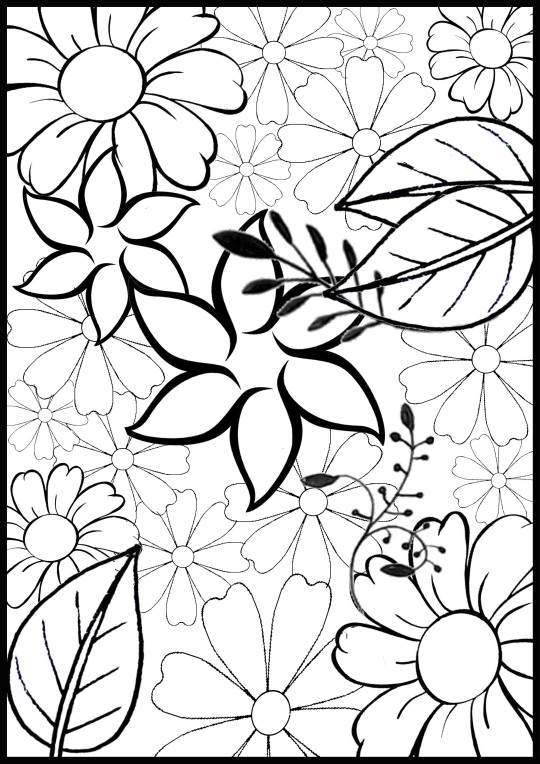
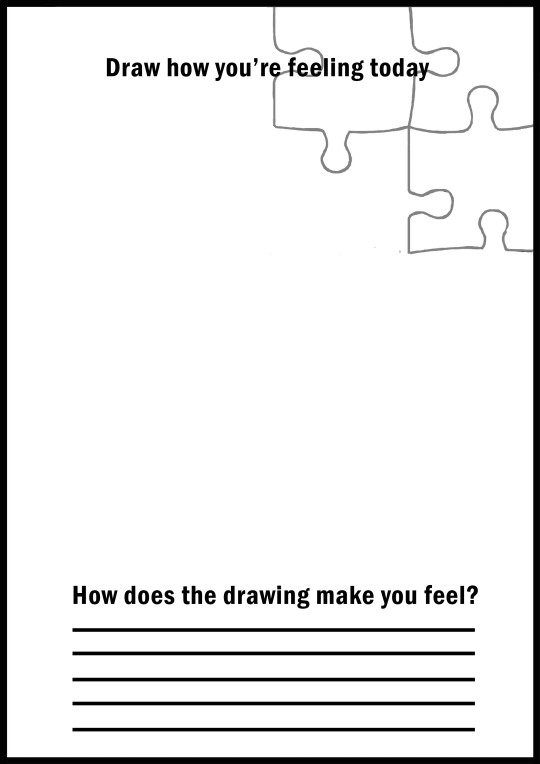
Above is the full collection of pages created to be in the book from beginning to end and the outcome of my research, findings and project as a whole.
0 notes
Photo
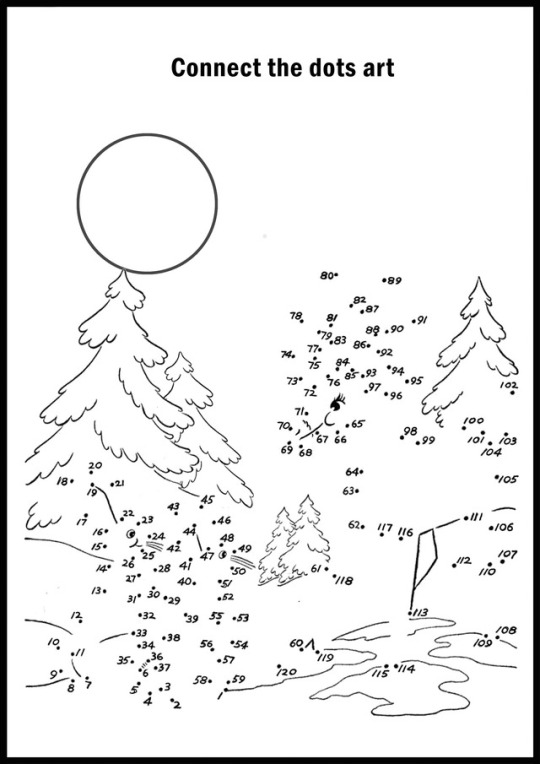
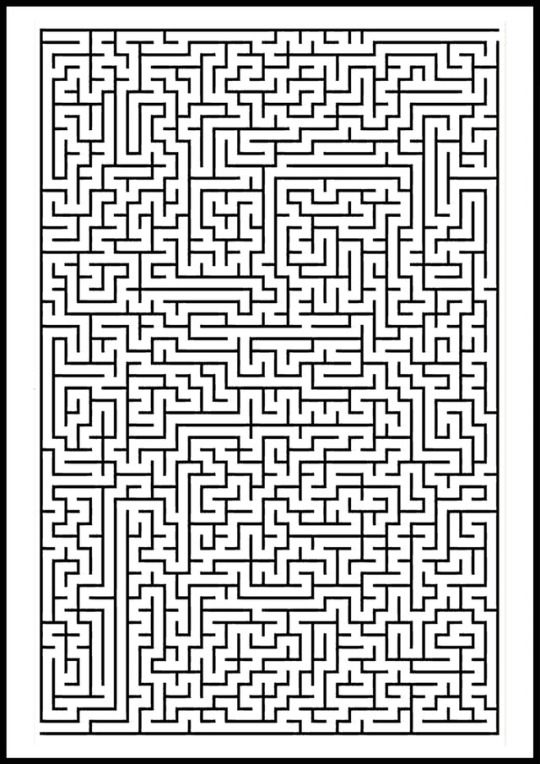

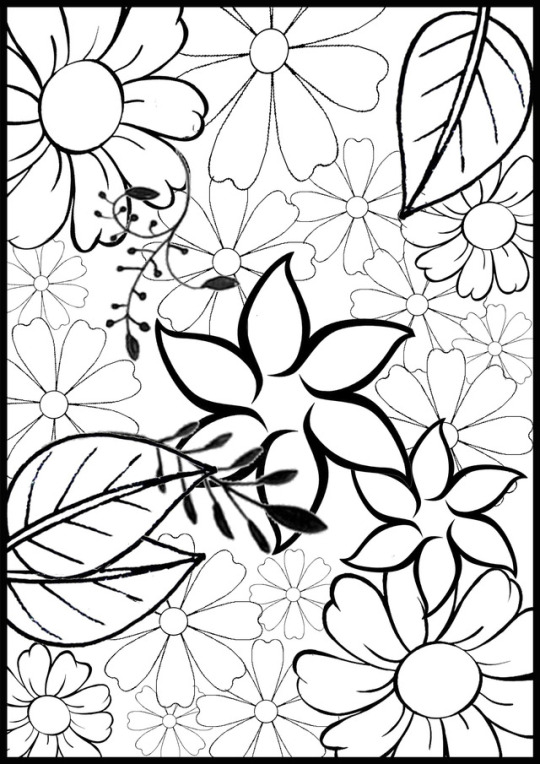
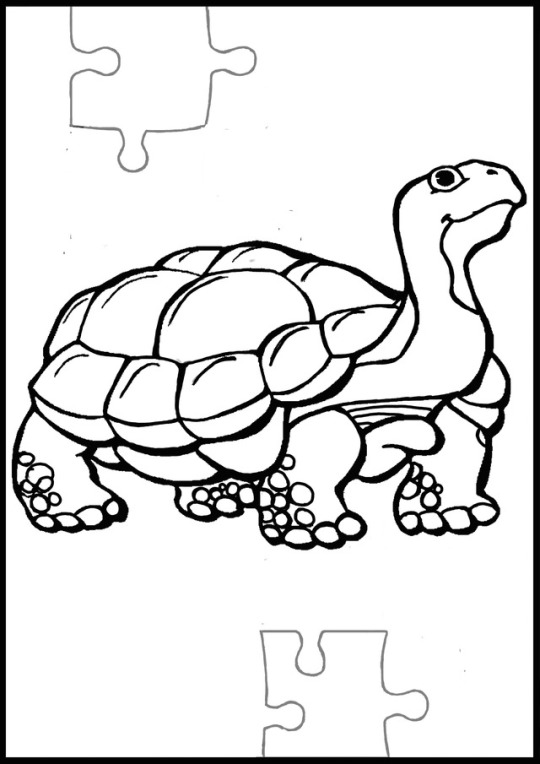
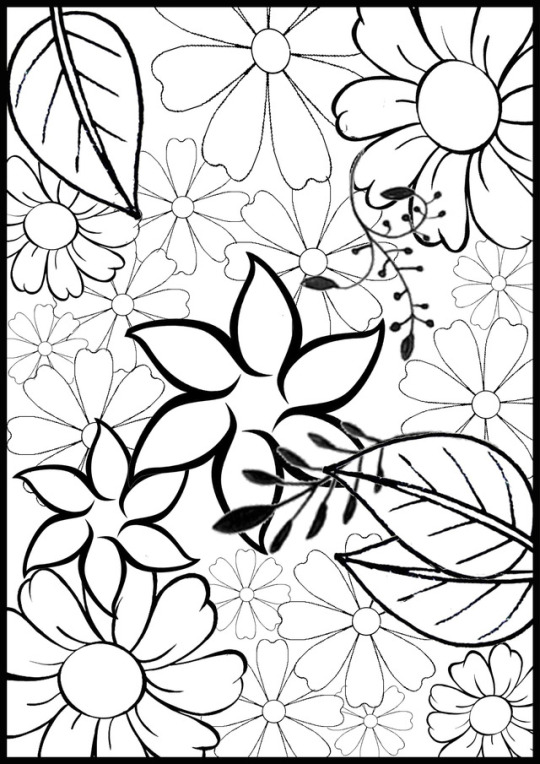
Non-Therapy related pages. These are pages included in the book for relaxation and entertainment purposes as an escape from the exhaustion of coping with emotions and life issues and to add variation.
0 notes
Photo

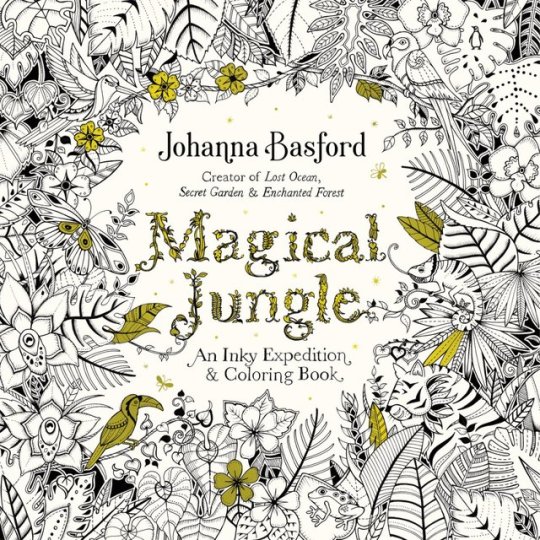
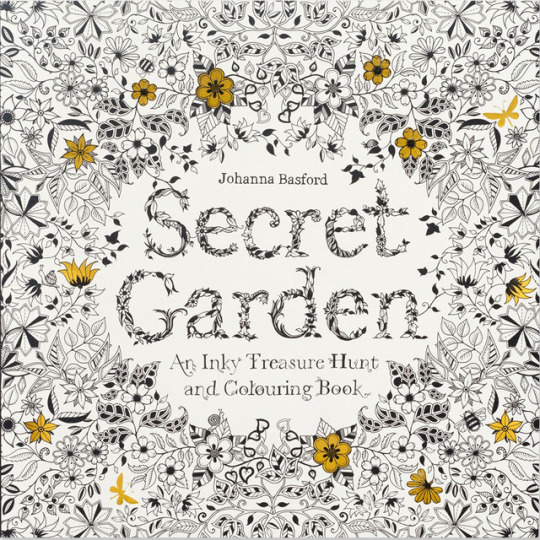

Johanna Basford Adult Colouring books im using as inspiration for my Self-Help book as mentioned in previous posts.
1 note
·
View note
Text
Visual Research 3
https://www.youtube.com/watch?v=9zuiDuNwre4
The above video documents people struggles with different life aspects and illnesses/disabilities. Many of the things that people are expressing I often feel the same about and they explain how for them being creative was an outlet to explore feelings and address issues whilst also feeling confident in yourself.
I personally tend to scribble a lot when im anxious or frustrated as its the only way I at the time can express how im feeling without having to actually tell anyone or cause a scene. Others may choose to be generally closed off with people and stick to small groups as its comfortable and safe which can be the case for art therapy too. You’re creating work which will inadvertently leave you feeling vulnerable and judged by onlookers.
I admit that I’m very paranoid that everything iv’e created is wrong and im just not good enough to make it right or I can’t feel how I feel because I have a fantastic life and im being selfish.
There are theories about famous artists working through personal issues through their art which was then classed as them creating new art styles etc. Artists would focus on the minds of the insane as a field of interest and representing it through their art as outsiders looking in and trying to look crazy similar to surrealists.
0 notes
Photo
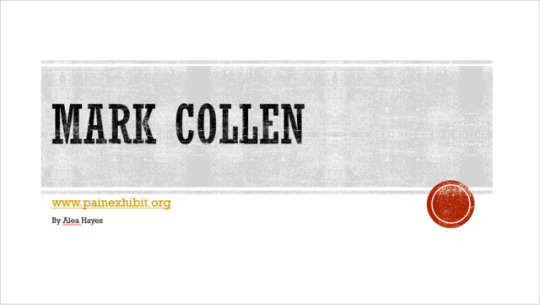
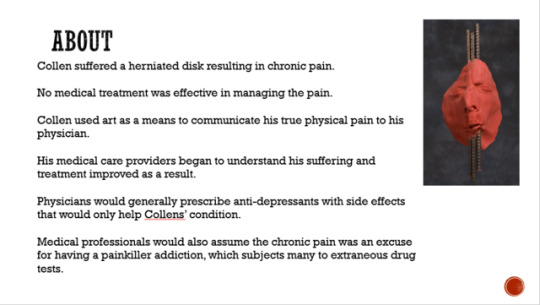
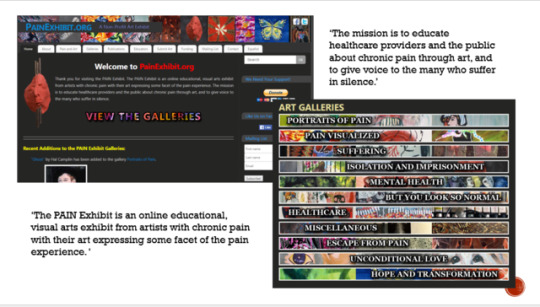

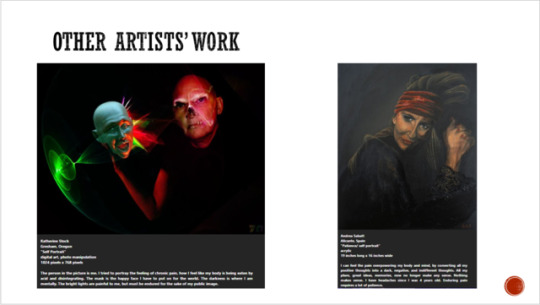
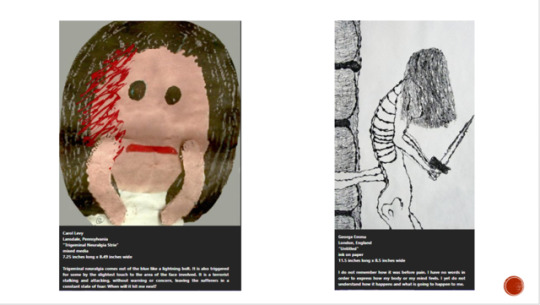

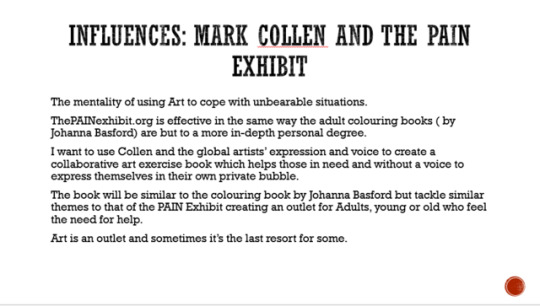
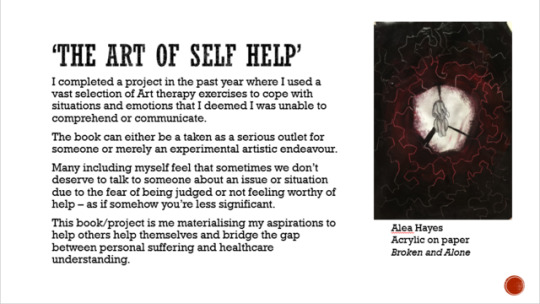
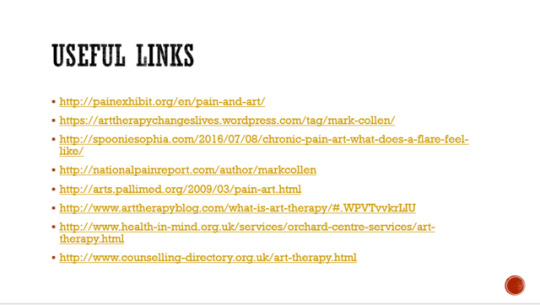
Above is the slides and information from a presentation on an Artist of my choosing, I chose an artist that linked closely with my project.
Slide 2: As explained in the slide Collen suffered a herniated disk and as a result suffered permanent chronic pain. Through years of suffering and a lack of relief from health care professionals Collen began expressing himself through art as a means to better express his suffering in order to help his physician to better understand and treat him.
Slide 3: Alongside the creation of Art Collen went on to seek out other artists globally who could participate in painexhibit.org - a non profit website set up to educate healthcare professionals.
Slide 4: Here is a collection of Collens’ works of art relating to his chronic pain and suffering. Throughout his work he uses a variation of materials. Although all his works of art are relating to the same subject area they are all presented in unique ways. The works of art like ‘Happy pills ain’t so happy’ specifically is a piece of work that directly addresses some of the well known struggle of chronic pain sufferers, such as the over prescribing of anti-depressants which have no effect or cause more damage than good or the extraneous drug testing for those on pain killers who are assumed to be addicts looking for new ‘pills’ rather than truthfully seeking help and relief.
Slide 5/6: These slides contain images from other artists globally who participated in the website. I chose these images as they directly relate to my personally or those I know in my personal life. Through dealing with/experiencing these illnesses I feel I am able to accurately sympathise/empathise with the voice of these artists and the severe situations they are portraying.
Slide 7: The website is a global non profit project where artists can share their voice judgement free and feel welcome and wanted. The participation of artists globally helped the PAINExhibit to become recognised globally and used for teaching purposes. The website is used in the professional healthcare industry as close as Tayside NHS centres in Dundee. Showing that a global project if believed in - can reach the far ends of the earth and effect many in its path.
Slide 8/9: The way Collen uses art as a form of therapy to present, attempt to understand and convey his suffering is what I find most influential about him as an artist. Someone who could have crumbled when time got tough instead found his voice through art and shared it with the world. This is something not everyone is brave enough to do, thus why I want to take the information gathered about artists and therapy techniques to increase my understanding and help me to create a book that may someday serve as form of self help work book for those who feel they don’t deserve anyone's help. This is where my book ‘The Art of Self-Help’ comes in as it focuses mostly on being creative and tactile with your issues, how you present them and how you evaluate and begin to understand them.
Slide 10: This slide contains useful links where I found important information on therapy and the PAINExhibit and other such artistic endeavours that someone may find informative or useful.
0 notes
Text
Visual Research 2
https://www.youtube.com/watch?v=caj-HV66MrQ
Above is a video where a woman is talking about the uses for art therapy for people with depression and Bipolar disorders.
I understand when she talks about sometimes you suppress your feelings rather than acknowledging or dealing with them and the outcome tends to be worse. This is where the use of Art Therapy comes in.
0 notes
Photo
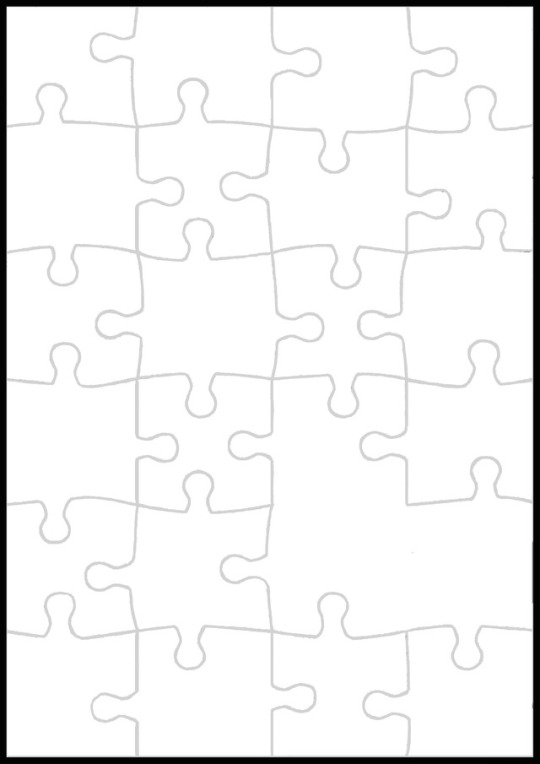
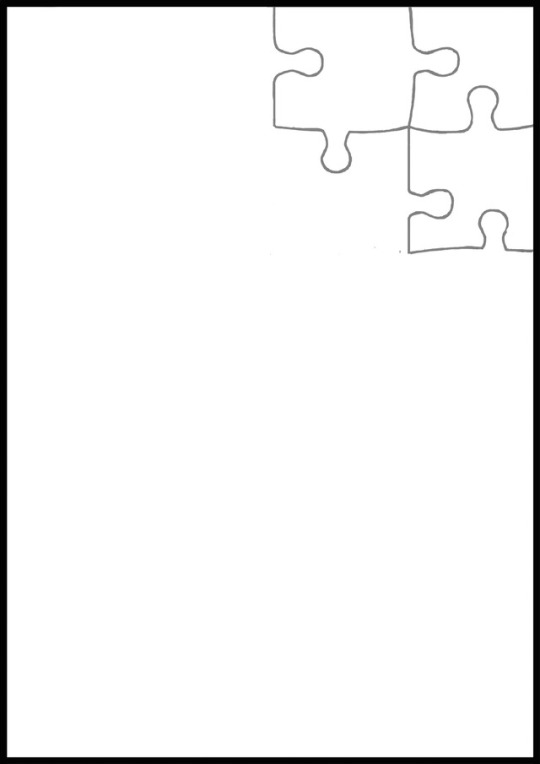


The first image is the cover page for the book where there will be information on the purpose of the book. The next 3 pages are 3 of background designs the pages will have. I wanted to keep the puzzle design consistent but not overwhelming throughout the pages.
0 notes
Photo
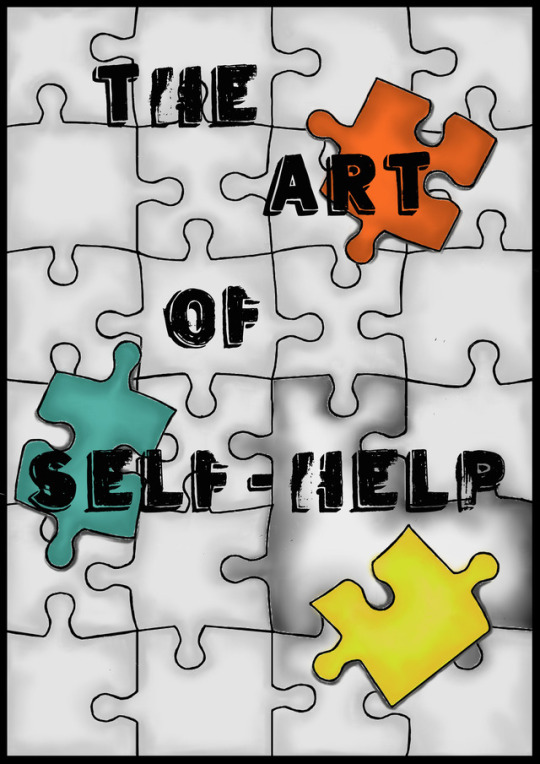
Above is the Cover page for my activity book along with the chosen font - Ves Regular
0 notes
Photo



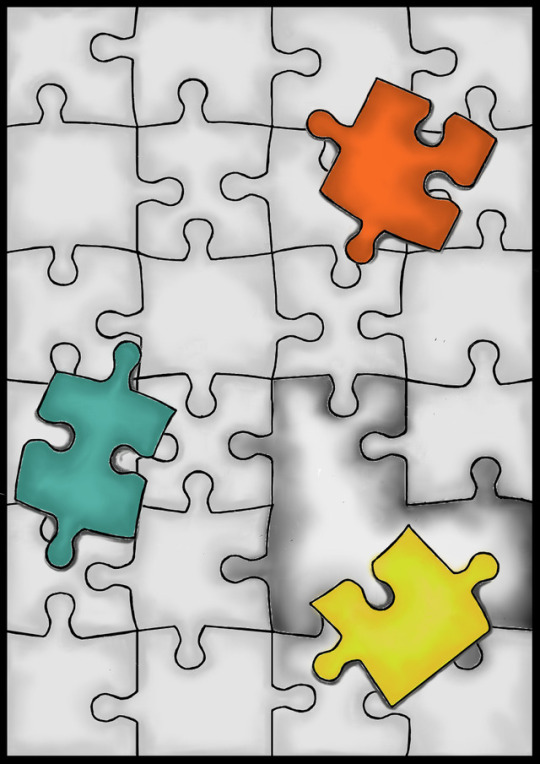

Above are a series of images showing the process i went through when making the cover for my book. To follow is a series of images where i experiment with fonts to chose the one I feel looks the best.
I felt the jigsaw puzzle design was fitting for the project as it is a book that requires people to expose their inner troubles and feelings attempting to make sense of everything they're going through and theoretically speaking - they re putting the pieces together to make sense.
0 notes
Text
Chosen Book Title
Without having to put too much thought into it, the name ‘The Art of Self-Help’ came to me and I feel it is a fitting title for the book as its a project based on Art Therapy and a previous project I completed called Self Art-Therapy.
0 notes
Text
Visual Research 1
https://www.youtube.com/watch?v=bPszGBfjuOY
The above video effectively represents the process that im attempting to create for myself. The idea that sometimes you need to become your inner child and pick up the big crayon and scribble on and off the page because maybe that’s all that will make you feel better.
I often get frustrated when I feel like I cant create the same kind of work that other people can but in reality I never acknowledge the techniques and skills and abilities that I do have, which is something iv’e been trying to address although it hasn’t been easy.
In the Video above Ann Lawton talks about how you get to a stage where you feel you aren’t good enough but art therapists are always there to unconditionally listen and help you acknowledge and deal with any issues you deem too much to cope with on your own.
When I get frustrated I don’t often want to create art but on the other hand in this project I have and will continue to create work when I often cannot be bothered, don’t feel like being expressive or generally don’t feel like opening myself up to the world, which I feel is necessary if I ever hope to help others.
The idea that someone could sympathise or even empathise with me is a rational and logical thought but at the same time I feel so silly often trying to express anything that I would rather not give anyone the chance to try and sympathise with me as its way less embarrassing than pretending I have no feelings at all, which is a common feeling many have. They may not have anyone there for them.
I need to reevaluate my need for artistic expression. I want to want to create work and have fun but at the same time the motivation to participation in life is seriously lacking.
I need to take myself less seriously and stop being so uptight about Art, its supposed to be fun so I should embrace it otherwise how could I expect others to do the same if I cannot.
0 notes
Text
Exercises
Through my research I have narrowed down a list of potential exercises that could be present in my exercise book. Below are a list of the potential activities
Draw how you’re feeling today
Create an emotion wheel
Create an image using line art
Design a post card never to be sent
Make an expressive piece of art about your family/loved ones
Create a mountain and valley image representing your life currently
Attach a message to a balloon and set it free outside
Use a magazine to collage things you like/things that make you happy
Draw/paint to a song you love
Draw/paint to a song you hate
Create a Mandala drawing
Draw a view outside that is visually appealing
Take a photo of something you find inspiring
A page with a maze puzzle
Write a poem based on a hard situation
A page with an image to colour
Write/draw somewhere you feel safe
A page with a connect the dots picture
Draw someone you love in the image (below)
0 notes
Text
General Therapy
Therapy offers you a safe, confidential place to talk about your life and anything that may be confusing, painful or uncomfortable. It allows you to talk with someone who I trained to listen attentively and to help you improve things.
The idea behind therapy is that it is often necessary to tell someone about something you’re going through for you to be able to effectively and emotionally deal with what’s happened.
Therapy I a personal process. Sometimes it is necessary to talk about painful feelings or difficult decisions, so you may go through a period of feeling worse than when you started. However, therapy should allow you to feel better in the long run.
There are many types of therapy listed in the link below:
http://www.itsgoodtotalk.org.uk/what-is-therapy/types-of-therapy
Although it Is often speculated that the relationship between client and therapist is often more important than the type of therapy approach they take.
Information gathered from http://www.itsgoodtotalk.org.uk/what-is-therapy
Psychotherapy is a blanket expression pertaining to the healing interplay or approach negotiated between a qualified expert and a patient, couple, group, family, or client. The difficulties discussed are emotional in nature and can differ in terms of the origins, triggers, impacts, and possible recommendations. Accurate evaluation is reliant on the practitioner’s ability and can develop or emerge as the clinician gains understanding, awareness and comprehensive expertise.
Therapy includes interactive processes between a person or group and a qualified mental health professional (psychologist, clinical social worker, licensed counselor, or psychiatrist). Its purpose is the exploration of feelings, behaviors and thoughts to increase problem solving skills or achieve higher levels of functioning. Psychotherapy is a gift to oneself and strives to increase a sense of well-being. Psychotherapists apply a variety of methods based on communication, discussion, experiential relationship building and performance, all of which have the intention to improve the mental health of a client, or to enhance relationships.
Information from http://healthpsychology.org/what-is-therapy/
Some therapists recommend “homework” for the client to do between sessions. Homework may include reading, writing in a journal, practicing assertive communication, exploring job options, spending quality time with a partner, or any other activity designed to help the client learn something new, practice new skills or overcome anxiety. You should always let your therapist know if you are uncomfortable with, or confused by, any homework they suggest.
Information from http://mapsnh.org/about/what-is-therapy/
Based on the information gathered about General Therapy, I can identify the similarities between Art Therapy and General Therapy. Where one uses verbal communication and tasks to help one identify and begin to deal with ongoing issues the other uses creative hands on tasks to help those struggling to visually represent hardships. I believe that it depends on the person which approach they take in their therapeutic process as some may be less inclined to attempt a visual artistic approach that may make them feel to uncomfortable whereas others may find it more awkward and uncomfortable to try and express verbally to someone a situation they are involved in.
I personally am very critical of myself and often feel stupid for feeling bad about something happening in my life, I tend to feel like I’m blowing every situation out of proportion and don’t want to seem like I want everyone’s attention which makes me feel uncomfortable trying to talk to a therapist or councillor. Due to this I have high hopes my experimentation with Art Therapy will help me better understand the process and create a potentially helpful art book that could be used by people of varying ages helping them creatively express themselves.
0 notes
Text
The Therapy Process
As I will not have an Art Therapist to refer to with my work I will have to take reference from many sources about information I should include in my activity book. During the therapy process you;
Determine what the process of art making was like
Identify what stood out to you
What surprised you
What was pleasant
What was difficult
Can you explain the images meaning?
What feelings do you have as you view it?
For this information I looked at a blog created by an Art Therapist where she talks about the process of each session and the kinds of challenging conversations she presents to her clients. These questions will be the basis of the self evaluation section of some of the activities. The blog I mentioned is linked below;
http://mindfulartstudio.com/what-is-an-art-therapy-session-like/
In the below link are Art Therapy Exercises which I may use as a guide for the book that I will adapt to make more manageable. Within these exercises I hope to help others determine what issues they feel they are facing and what obstacles they feel they are having trouble coming to terms or coping with. Furthering their understanding of themselves.
http://intuitivecreativity.typepad.com/expressiveartinspirations/100-art-therapy-exercises.html
From the outset I can acknowledge that I have a tendency to call the art book I will complete as a “task” book instead of exercise book. Although I have to complete this project for a university class I want it to be more than just work I have to do, my goal is to use art in a way I have never before to help me explore the possibility of others using my book to express themselves. I feel other from the outset may have a negative view about the book and think it pointless but never the less I want to try my best to convey my vision and create a digital project that can be taken to the physical space and used in hand by the public.
0 notes
Text
4th Year Project Critique: How Colour and Light Help Drive a Narrative
How colour and light help drive narrative (blue is the loneliest colour) by Matt McEwan
The proposer of this project (Matt) endeavoured to explore and investigate the effects colour and light have on the user experience. Through research Matt hopes the findings will present a better understanding about the impact and implications of colour and its effect on narrative progression and presentation.
Colour is important as without it life would be boring. Colour creates impact where otherwise life would be dull. Matt began by evaluating colours along with their meanings and implications. For example;
Red: is the colour of fire and blood, so it is associated with energy, war, danger, strength, power, determination as well as passion, desire, and love.
Yellow: Yellow is the colour of sunshine. It's associated with joy, happiness, intellect, and energy. Dingy yellow - represents caution, decay, sickness, and jealousy.
Green: is the colour of nature. It symbolizes growth, harmony, freshness, and fertility. It has strong emotional correspondence with safety.
Blue: is the colour of the sky and sea. It is often associated with depth and stability. It symbolizes trust, loyalty, wisdom, confidence, intelligence, faith, truth, and heaven.
Purple: combines the stability of blue and the energy of red. It is associated with royalty. It symbolizes power, nobility, luxury, and ambition. It conveys wealth and extravagance.
The above descriptions were some of the connotations of colour that Matt researched. Matt then moved onto looking at games and movies and evaluating the effects of colour. In ‘Inside Out’ the beginning of the movie is bright and colourful which expresses joy and happiness. As the main character is packing her room to move city the colour scheme changes becoming more of a grey dull yellow shade representing the characters anxiety about moving. At the end of the selection of scenes the intensity of the colours changes to dull black and grey representing the characters depression about having to move away from home. The transition through the colour spectrum presents the ongoing feelings and changes in the space. The symmetry between the dark and light colours creates a balance as neither end of the spectrum overwhelms the other. This creates a change in user experience, tension and highlights an adaption in emotion.
Matt wants to take the findings from his research and put into practice how he can use composition and complementary colours alongside designing and scene modelling with basic forms to show how groups of colours together can change the emotional effect of a scene. The happy scenes will contour those of a more dark nature. The use of shadow and lighting will help to better present the theme of the space, using dark shadows and light area’s with subjective colour for an uplifting inviting environment.
Instead of using a large scene and reducing the amount of time used for colour experimentation the scope of the project was reduced to a smaller more specific low poly model. The goal is to present the same scene with multiple colour compositions to convey different emotions i.e. Dark gloomy colours such as black, red, grey and dull yellow for a horror scene and bright yellow’s, pink, green’s and blue for a scene much like a cartoony Disney scene.
The use of colour to convey emotions within scene’s is effective and can present a range of outcomes but there is the possibility that the same simple bedroom scene with furnishings and broken blinds won’t be able to be used universally throughout the experimentation process. Some colour schemes will only look appropriate in a space depending on the craftsmanship which could drastically alter the viewers perception of the area presented.
Words used from Glossary: Balance, colour, complementary colours, composition, design, contour, form, highlight, craftsmanship, intensity, modelling. Perspective, spectrum, space, shadow, shade, subjective colour, tension.
0 notes
Photo

Mark Collen ‘Happy Pills ain’t so Happy’
crushed and whole Welbutrin, acrylic media, charcoal
‘ It is all too common for pain specialists to prescribe anti-depressants to treat pain. In my case I was unable to tolerate the side effects from every anti-depressant and the piece of art reflects this reality.’
0 notes